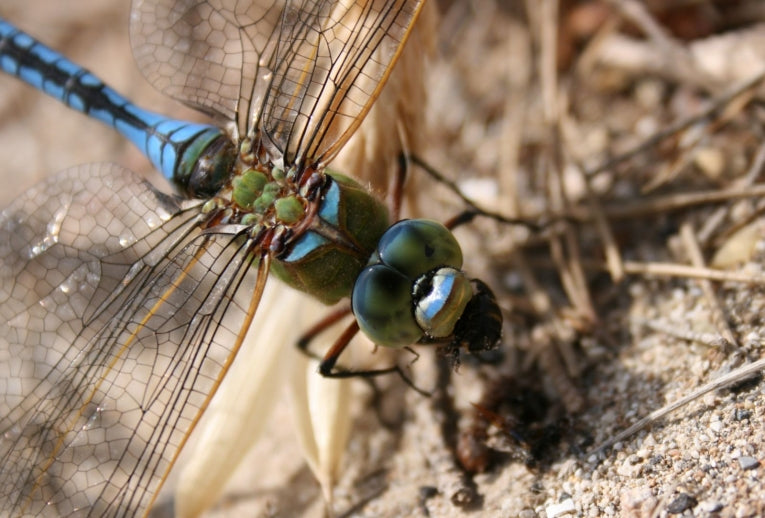''Crossing the road is an endeavour to which almost everyone who walks to anywhere at all will have to undertake at some point or another'', states the online BBC idiot's guide to crossing the road. The same applies for animals which are able to disperse and to utilise different habitat patches within the environment.
Several studies have suggested that roadways may represent barriers to this movement, and could act as sources of enhanced mortality, eventually eliminating these species from nearby habitats. Although it is a common observation that vast number of insects die on the grills and windshields of motor vehicles, few studies have actually attempted to quantify mortality rates, and similar research has mainly been directed at vertebrates. In a study, currently in press in Biological Conservation, researchers in the U.S. estimated the mortality rates and the influence of roads on dragonflies behaviour, in four roadways at the Des Plaines River Valley in Illinois. During this study, the researchers scanned the road for dead dragonflies and observed their behaviour along roadways
Dragonflies are one of the most ancient and beautiful orders of insects. They are frequently top predators in wetlands, especially when fish are not present, and the predaceous younger larval stages are entirely confined to water habitats. The adults are mobile and are able to move around in order to accommodate for the various terrestrial ecological needs.
Similar to vertebrates, dragonflies have relatively low population size and s long-lived adult lifespan, and are therefore more susceptible to various threats including direct roadway mortality. In the United States, 277 of the 441 dragonfly species are considered of great conservation need in at least part of their range, and about 8.5% of these are listed as threatened or endangered in the International Union for Conservation of Nature (IUCN) redlist. Globally, threats to dragonflies include water use, pollution (example from agricultural chemicals), habitat degradation and loss, as well as the introduction of alien species, such as predatory fish.
Results obtained from the study carried out in Illinois provided no evidence that roads act as barriers to dragonfly movement. Indeed, most of the adult dragonflies recorded in flight actually crossed to the other side of the road, but were less likely to undertake the endeavour for roads characterised with the highest volume of traffic. However, large numbers of dead dragonflies were collected over the flight season, suggesting that motor vehicle collisions directly impact on populations of dragonflies through roadway mortality.
The study also demonstrates that some species are more susceptible to direct mortality, with two species in particular making more than 70% of the collected dead dragonflies. This was explained by the comparatively low height flights (typically under 2m) and relative lack of agility of these species. The impacts of roadways on dragonflies are complex and intrinsically linked to their ecology. Nevertheless, this study demonstrates the need to assess the biological long-term impacts of roadways and the importance of considering not only larger fauna, but also normally overlooked taxa, when planning the location of new roads.










